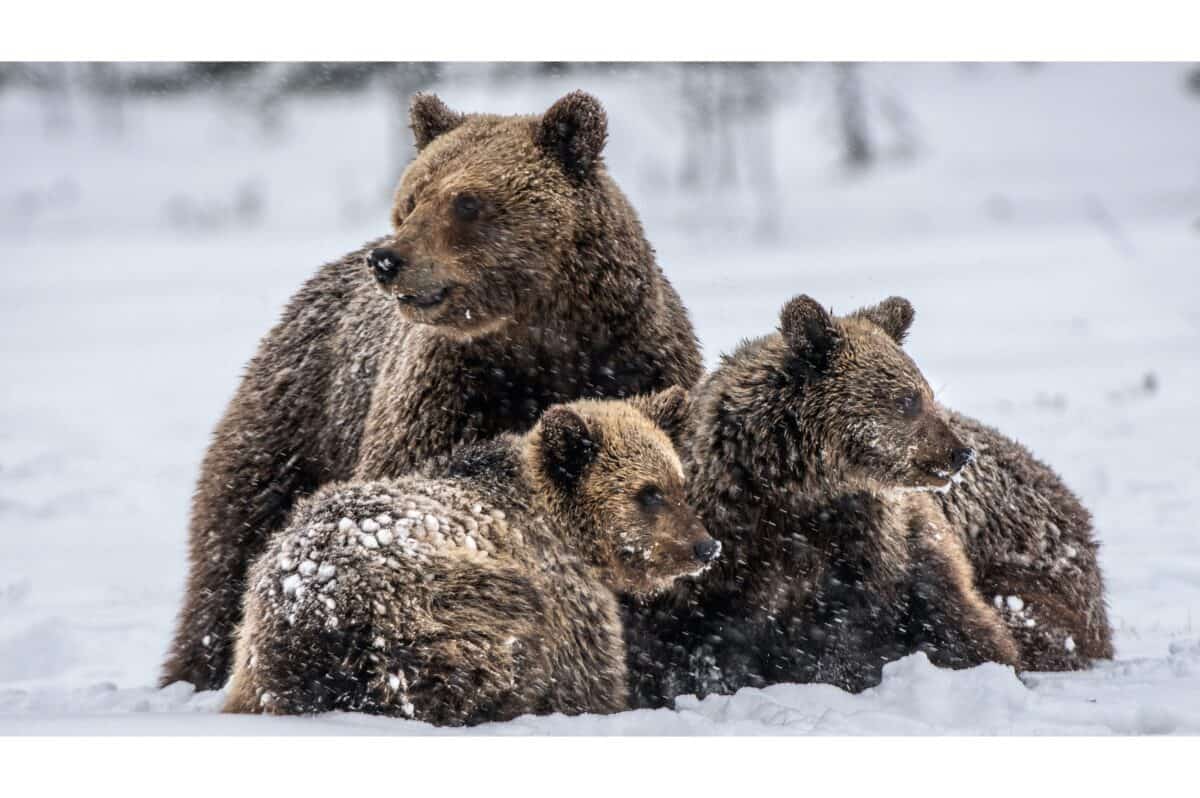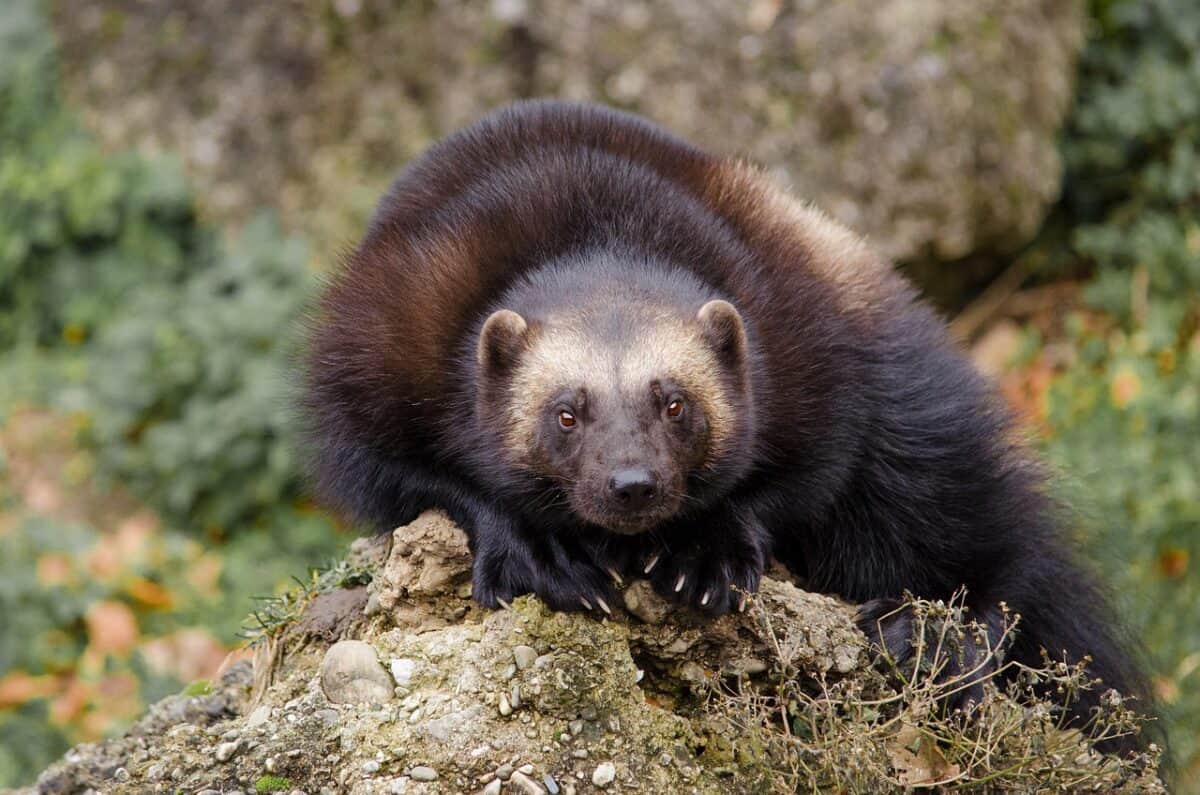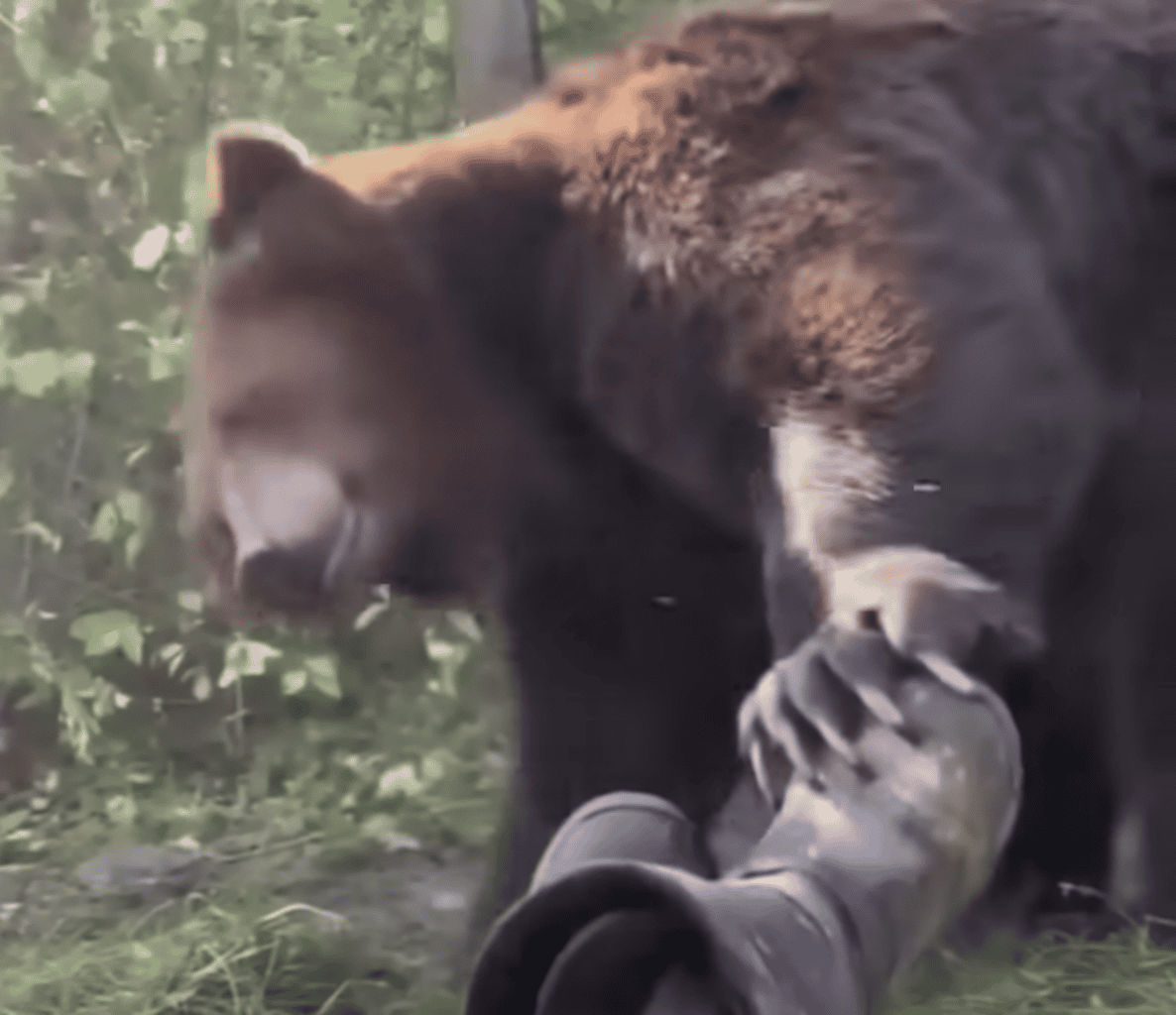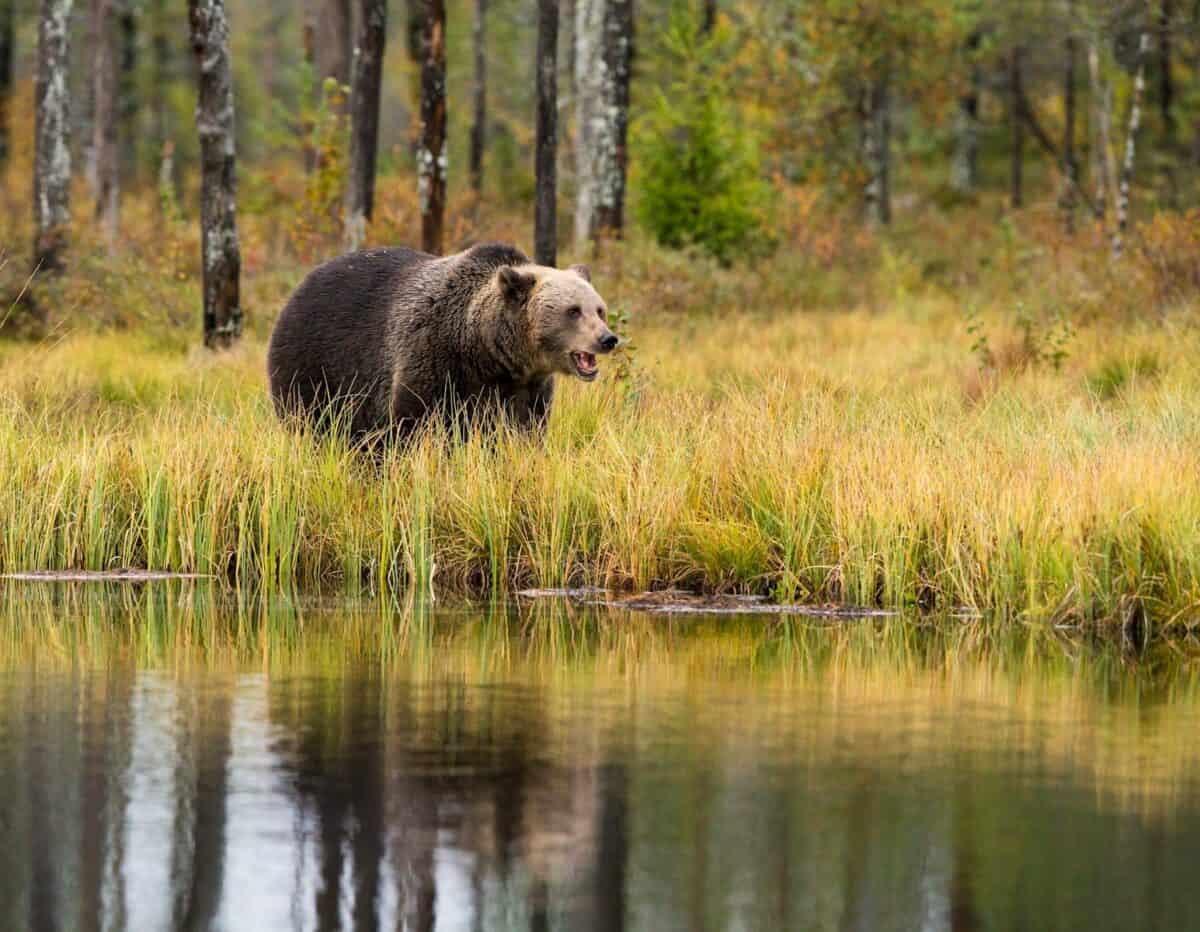Brown bears, magnificent creatures that command both awe and fear, are among the most powerful predators in North America and Eurasia. While these animals typically avoid human confrontation, certain circumstances can transform them from reclusive forest dwellers into lethal adversaries. Understanding the factors that trigger aggressive bear behavior is not just fascinating—it’s potentially life-saving information for anyone venturing into bear country. This comprehensive guide explores the biology, behavior, and environmental conditions that can cause brown bears to become dangerous in wilderness encounters, providing crucial knowledge for coexisting safely with these impressive but potentially deadly animals.
The Impressive Biology of Brown Bears

Brown bears (Ursus arctos) possess a physiology perfectly evolved for both power and survival. Weighing between 300-1,500 pounds with males substantially larger than females, these mammals combine immense strength with surprising agility. Their muscular shoulders support powerful forelimbs capable of delivering blows strong enough to kill large mammals instantly. A brown bear can reach speeds of 35 miles per hour—faster than Olympic sprinters—making outrunning them impossible. Their physical capabilities include the strength to flip 700-pound rocks with ease when foraging and the ability to break a moose’s neck with a single strike. This biological reality means that when a brown bear decides to attack, they bring overwhelming physical advantages that humans simply cannot match.
Natural Behaviors vs. Aggressive Responses

Despite their fearsome capabilities, brown bears are naturally conflict-avoidant animals. Studies tracking bear behavior show they typically detect humans long before we’re aware of their presence and quietly withdraw. Their primary diet consists of berries, nuts, roots, and occasionally fish or carrion—not humans. However, this generally shy demeanor can change dramatically under specific circumstances. Understanding the difference between normal bear behavior and warning signs of aggression is crucial. Normal behaviors include standing on hind legs (to better see or smell, not necessarily aggression), huffing sounds (indicating nervousness), and jaw popping. Aggressive signals include direct staring, lowered head with ears laid back, and a swaying motion that often precedes a charge. Recognizing these behavioral distinctions can be the difference between a peaceful encounter and a deadly confrontation.
Maternal Aggression: Cubs and Danger

The most predictably dangerous brown bear encounter involves a mother with cubs. Maternal aggression accounts for approximately 70% of brown bear attacks on humans, according to research from the International Association for Bear Research and Management. Female bears with cubs possess a hypervigilant protective instinct that dramatically lowers their tolerance for perceived threats. Their defensive perimeter can extend up to 300 yards from their young—a distance many hikers unknowingly violate. The severity of maternal attacks is noteworthy; they tend to be more sustained and determined than other types of bear aggression. A mother bear will continue attacking until she perceives the threat to her cubs has been neutralized. Wildlife biologists note that these defensive attacks, while severe, typically stop once the person is no longer moving or appears incapacitated, unlike predatory attacks which continue until completion.
Food-Related Aggression and Habituation

Competition for food resources drives another significant category of dangerous bear behavior. During hyperphagia—the intensive feeding period before hibernation—bears need to consume up to 20,000 calories daily, making them particularly sensitive about food sources. Bears defending a carcass or prime fishing spot can become exceptionally territorial and aggressive. Even more dangerous are bears that have become habituated to human food. Once a bear associates humans with easy meals, natural fear barriers erode, leading to increasingly bold behavior. Data from Yellowstone National Park shows that food-conditioned bears are 15 times more likely to exhibit aggressive behavior toward people than their wild counterparts. The progression is insidious—what begins as scavenging from improperly stored food evolves into direct confrontation as the bear loses its natural wariness. This habituation process transforms otherwise cautious animals into potential predators that view humans as either competition or, worse, a food source.
Predatory Attacks: When Humans Become Prey

The rarest but most terrifying bear encounters involve predatory intent, where the bear actively hunts humans as food. These attacks comprise less than 15% of all brown bear incidents but have nearly 90% fatality rates without intervention. Predatory behavior differs markedly from defensive aggression. The bear approaches silently, often stalking the target before attacking. These encounters typically involve lone, mature male bears, sometimes in poor physical condition or during food scarcity. Unlike defensive attacks that include warning behaviors like huffing or jaw popping, predatory bears remain chillingly quiet. Research from the Russian Far East, where brown bear predatory attacks occur more frequently than in North America, indicates that such behavior sometimes develops after bears scavenge human remains or in regions where natural prey has severely declined. Once a bear has successfully preyed on humans, the behavior may continue—making immediate management response essential after confirmed predatory attacks.
Territorial Defense and Surprise Encounters

Brown bears maintain loose territories, with dominant males claiming prime habitat areas during mating season and around abundant food sources. Territorial aggression peaks during late spring and early summer breeding periods when male bears are particularly intolerant of perceived competition. Surprise encounters represent another significant danger scenario, occurring when a hiker accidentally comes within the bear’s critical space (typically under 50 yards) without warning. The bear’s fight-or-flight response triggers instantaneously, and when flight isn’t perceived as viable, fight becomes the default. Research conducted in Alaska’s Denali National Park found that 95% of aggressive bear encounters involved surprise meetings around visual obstacles like dense vegetation or terrain features. The bear, startled at close range, may perceive no escape route and launch an immediate defensive attack. These situations are particularly dangerous because they unfold so rapidly—often in seconds—giving victims little time to employ deterrent measures.
The Impact of Human Behaviors on Bear Aggression

Human actions significantly influence bear behavior and the likelihood of dangerous encounters. Running from bears triggers predatory chase instincts, potentially converting a curious bear into an attacking one. Direct eye contact can be interpreted as a challenge by bears, escalating tension. Improper food storage creates food-conditioned bears that associate humans with meals. Perhaps most dangerous is approaching bears for photographs or closer views—a behavior that has preceded numerous attacks. Wildlife officials in Yellowstone documented that in 88% of bear-inflicted injuries, victims were approaching bears for better photographs. Seemingly innocent behaviors like walking quietly on trails (which increases surprise encounters) or hiking at dawn/dusk (when bears are most active) also substantially increase risk. Understanding how human behaviors influence bear responses is essential for wilderness safety, as modifying our actions represents the most controllable factor in preventing dangerous interactions.
Bear Attacks: Statistics and Demographics

While bear attacks capture headlines and imagination, their statistical rarity deserves emphasis. North America averages approximately 11 brown bear attacks annually despite millions of wilderness visitor days. Long-term data indicates that fatalities from brown bear attacks in North America average 2-3 per year. Certain demographic patterns emerge in attack statistics: solo hikers face substantially higher risk than groups of three or more people. Men are victims in approximately 88% of predatory attacks, possibly due to higher-risk behaviors or solo wilderness activities. The most vulnerable periods for attacks occur during early morning and evening hours, aligning with peak bear activity times. Geographically, Alaska experiences the highest attack rates in North America, followed by western Canada and the Greater Yellowstone Ecosystem. Understanding these statistical patterns helps contextualize risk while identifying specific scenarios and behaviors that warrant extra precaution in bear country.
Seasonal Variations in Bear Aggression

Bear behavior and aggression risk vary dramatically with seasonal changes. Spring emergence from hibernation represents a period of nutritional stress and potential irritability as bears, having lost up to 30% of body weight, desperately seek calories. Mother bears with newly emerged cubs are particularly defensive during this period. Summer brings mating season, when male bears become more territorial and aggressive toward perceived competitors. Fall hyperphagia (intense pre-hibernation feeding) creates another high-risk period as bears become singularly focused on caloric intake, potentially perceiving humans as competition near food sources. Research tracking bear attacks in Alaska’s national parks found a distinct bi-modal distribution, with spikes in May-June (post-emergence/mating) and September-October (hyperphagia). Understanding these seasonal variations allows wilderness visitors to adjust behaviors accordingly, exercising heightened caution during peak risk periods and preparing more thoroughly for potentially aggressive encounters.
Geographic Hotspots for Dangerous Encounters
Certain landscapes and features create natural confluence points where dangerous bear encounters become more likely. Salmon streams during spawning season concentrate bear activity, creating high-risk areas for human-bear interactions. Berry patches in late summer and early fall similarly attract feeding bears in high densities. Ridge lines and mountain passes act as natural travel corridors for both bears and humans, increasing encounter probability. Perhaps most dangerous are carcass sites, where bears may aggressively defend their protein-rich find. Research from Glacier National Park identified that 76% of surprise aggressive encounters occurred in areas of dense vegetation with limited visibility along waterways or on terrain features that naturally funnel movement. Geographic information system (GIS) mapping of attack locations across North America reveals these “conflict hotspots” are remarkably consistent—places where natural bear abundance, human recreational use, and landscape features that limit visibility converge. Recognizing these geographic risk factors helps wilderness users make informed decisions about routes, camping locations, and seasons for backcountry travel.
Effective Defensive Tactics During Bear Encounters

Surviving a close bear encounter often depends on split-second decisions and proper defensive tactics. Bear spray (capsaicin-based deterrent) has proven remarkably effective, with studies showing it prevents injury in over 90% of aggressive encounters when deployed correctly. The conventional wisdom “play dead for brown, fight back for black” has validity—submissive positioning during defensive brown bear attacks often shortens the encounter duration. However, if the attack persists beyond initial contact, it may indicate predatory intent, warranting active physical resistance. Speaking calmly while slowly backing away works in many cases when a bear hasn’t committed to aggression. Research from bear attack survivors indicates that protective positions—covering neck and vital areas while lying prone—significantly reduced injury severity. Climbing trees offers limited protection from brown bears, as adults can climb 10-15 feet despite their size. The most effective tactic remains prevention: making noise while hiking, traveling in groups, carrying bear spray, and maintaining situational awareness to avoid surprising bears in the first place.
The Future of Bear-Human Interactions

As wilderness recreation continues increasing while bear habitats face development pressure, human-bear encounters will likely increase in frequency. Climate change compounds this challenge, altering traditional bear feeding patterns and potentially extending active seasons in some regions. Technological solutions like early detection systems on trails and improved deterrents offer promise, but fundamental challenges remain. Wildlife management agencies increasingly focus on proactive education, with studies showing that comprehensive bear awareness programs can reduce negative encounters by up to 80%. Genetic research on “problem bears” suggests certain individual animals may have predispositions toward human tolerance or aggression, potentially allowing more targeted management. Future approaches will likely combine traditional wisdom with emerging technologies—including AI-powered prediction models that forecast high-risk periods and locations. The most successful strategies will balance human safety needs with conservation imperatives, ensuring both species can coexist in shared landscapes despite the inherent risks when apex predators and humans occupy the same spaces.
Brown bears represent a paradox in the natural world—magnificent creatures that deserve our admiration and conservation efforts, yet capable of becoming lethal adversaries under specific circumstances. The key to coexistence lies in understanding, preparation, and respect rather than fear. By recognizing the biological, behavioral, and environmental factors that can trigger aggression, wilderness enthusiasts can make informed decisions that dramatically reduce risk while still enjoying bear country. The statistics remain clear—fatal bear attacks are extraordinarily rare events that should inform but not dominate our relationship with these animals. As we continue venturing into wild spaces, our approach to brown bears should balance healthy caution with appreciation for these remarkable survivors that have walked alongside humanity since prehistoric times. Through education, proper preparation, and respectful distance, we can minimize deadly encounters while ensuring these iconic predators remain part of our wilderness heritage for generations to come.
- The Coldest Town in America—And How People Survive There - August 9, 2025
- How Some Birds “Steal” Parenting Duties From Others - August 9, 2025
- 12 Deep-Sea Creatures You Won’t Believe Exist - August 9, 2025

